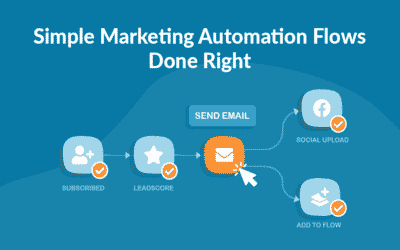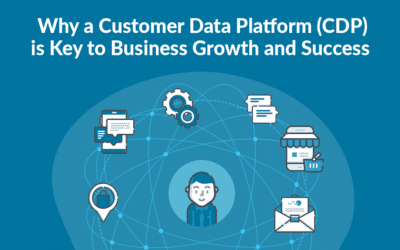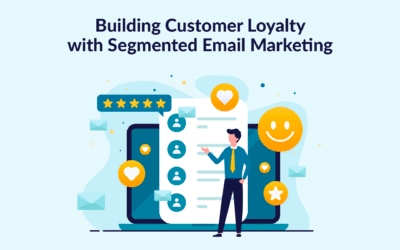Do I really need to create a Customer Club?
Well on the surface of it, strictly speaking, no.
But unless you have found a magic formula, a totally unique product or service, and a totally captive audience, the simple commercial reality we all face is that competition is fierce – regardless of the size of your business.
Moreover, a belief that you have little or no competition is a recipe for disaster, no matter how true that may feel at the moment. Because sooner rather than later, someone, somewhere is also going to start doing what you do, and unless you’re extremely careful and very lucky, they might even do it better than you do too.
Of course, you will already have a series of well thought out and interlinked strategies in place across your business to help counter that eventuality, right?
If your answer to what should have been a rhetorical question is “not really”, stop reading this and immediately read our article on Online Marketing Strategy instead. When you’re done there, come back and carry on reading this article.
So, you’re all set now with your fundamental cross-business resilience-providing strategies?
Good.
Well, here’s another gem to add to your portfolio of excellence.
And it’s a cracker.
You already have a Customer Club
Seriously, you do.
No, it’s not official, it’s not strictly defined, and it doesn’t have its own marketing and fulfilment team or its own logo or branding within your company.
But it’s there.
Just look at all those returning customers eagerly engaging with your well-thought-out content across your digital touchpoints. All those people actively participating in your campaigns, opening your mails, responding to your text messages, clicking through to your offers, your quizzes and competitions, your video content, your blog, your downloads, your product catalogue.
All those people converting.
Consistently.
They’re your customer club.
And if you’ve not created one for them, perhaps it’s way past time you did.
But how?
Understanding the basics
It’s worth considering that the “unofficial” customer club described above consists essentially of two types of customer:
- The Regular Customer
The frequently returning customer that actively and consistently chooses your products and services over the competition.
- The Loyal Customer
Your brand ambassadors, the customers that are not only regular, but actively recommend your brand to their friends and family.
It is these two groups that sit at the heart of your business growth, and it is these two groups that will form the core of your Customer Club. As we discuss in our article about Customer Loyalty, building that loyalty is essential to your continued success and research collated by Small Business Trends makes this abundantly clear:
- The probability of selling to an existing customer is between 60-70%, whilst to a new prospect it is only between 5-20% (Marketing Metrics)
- 80% of future profits are likely to come from 20% of your existing customers (Customer Thermometer)
- 65% of a company’s business comes from existing customers
- Repeat customers spend at least 33% more than new ones
If your data reveals a consistent pattern of both regular and loyal customers visiting your shop, you’ll know that you’re already doing the right sort of things to generate loyalty. If not, then a Customer Club is not the solution. Alone, it will not solve the issues you are facing – you need to find out what else it is that you are not doing first in order to make your business fly.
A Customer Club is a brilliant tool and implemented well it will help immensely with your bottom line and your brand reputation, but it is not the answer to a poor product, poor marketing or poor service.

Keep on keeping on
All that said and done, a Customer Club is the logical extension of the very best of your existing marketing efforts. You will use it to further optimise engagement with your most loyal customers, to further nudge your regular customers into this loyalty niche, and together with all your other wares to catch the eye of the casual passer-by that’s popped in merely to have a nose around.
Your Customer Club can draw on any number of ideas, depending on the nature of your business and the products or services you provide.
How you combine them to create a successful club of your own is entirely up to you, and as with all things, this will necessitate a certain degree of trial and error. But, as the old adage goes, “nothing ventured, nothing gained”.
There are many tools at our disposal that you can use in building your Customer Club, such as:
- Club Points – for a variety of redemption purposes.
- Unique Club Rewards
- Club Coupons
- Invitations to “Exclusive Brand Premieres”
- Club-only nights/events at bricks and mortar outlets
- Privileged early access to new products
- Free merchandise
- Unique Club-only merchandise that may be created via DTF or screen printing
- Birthday deals
- Brand ambassador opportunities
- Affiliate program opportunities
You don’t have to use all of these; your business and your available resources will dictate what is appropriate. Nor is this a definitive and exhaustive list of the tools available to you – you will find your own twist and “flavour” to make your club perfectly reflect your users.
What is always important to bear in mind – and make abundantly clear to all your prospects and existing users – is that your Customer Club is not merely your contact list.
It is something special, something unique, something worthwhile, and, critically, something desirable.
From a purely practical point of view, in terms of enriching and using your data creatively, building a Customer Club is a first-class tool for gathering behavioural and qualitative data, so from this perspective alone it is a very worthwhile use of your time.
Never forget that loyal and engaged customers are much more likely to offer up their pearls of wisdom and offer feedback on where you are going both right and wrong with your products and services, and your sales and marketing efforts.
No two Customer Clubs are entirely the same…
Of course they’re not, but that said, creating a worthwhile and successful club will always benefit from following the same simple set-up guidelines:
- Plan your customer club
- Develop your customer club
- Test your customer club
- Optimise, adapt and improve your customer club
Plan
As with anything, having a plan is the foundation of success. Of course, this plan may change over time, it would be amazing if it didn’t, and this plan may vary given the specifics of your business, but you should include the following in your plan:
- Set goals for your Customer Club: Why do you want a Customer Club and what do you want it to achieve? The benefits to you that your club could provide include (and are not limited to):
- Preventing customer churn
- Win-backs – encouraging lapsed customers to return
- Improving the profitability of existing customers’ transactions
- Collecting data to deepen your understanding of your customers as a whole
- Pinpoint your key customers: Who are your best customers? Bear in mind that just being a regular customer is not necessarily the best criterion, this frequency needs to be seen in the context of profitability. Use a CRM solution to help you identify who your most profitable customer groups are, and how, where and when you engage with them.
- Likes/Dislikes: Taking the time to understand what it is that your most loyal customers like and dislike about your products and services will enable you to create genuinely meaningful and relevant rewards.
- What kind of Club are you? This will depend upon your line of business and reflect how you want your Customer Club to appeal to your most loyal customers. But things to consider would be whether the club is open to all to join, if customers need to fulfil certain criteria to join, if there is an “invitation only” exclusivity about it, or indeed any combination of the above and other criteria.
- Will it include a points system, or is it driven by spend/profitability? The important thing here is always to focus on your users’ needs, and what it is you have discerned from their likes and dislikes that will encourage them to engage with the club.
- Tracking engagement: How is your audience engaging with the club? Establish relevant trackable KPIs that will give you the insights you need to understand the effectiveness of your Customer Club.
Develop
Getting practical, you will then need to fine tune your plan.
- Club rules: Make them crystal clear for both participating and potential customers. How do they join, what are the rewards, and how can they benefit from being a club member? Do NOT over-complicate things.
- Club “currency”: Establish what it is that you will use to reward your club members, will it be coupons and/or codes? Can they be redeemed only in your online or bricks and mortar stores, or can they be used in both? Consider if you want to issue a reward that is designed to increase in-store footfall to physical locations, or to drive traffic to your online shop. Do your customers prefer to have a physical, tangible gift certificate, are they happy to print-at-home, or are they more engaged with things like QR codes?
Test (and test again)
This is absolutely vital and should form an on-going part of your club strategy. As with all things commercial, something may change in the marketplace, or with the perception of your brand, that will create challenges for your club, so be sure that your club is always providing your members with something that reflects and rewards their wants and needs.
- Assuming this is your first club, start with a pilot version that engages and includes the very best of your customers. Make them part of the success and let them know they are vital to its development. Reward them with something extra for their engagement at this stage.
- Keep your club fresh, optimise what works, and change what doesn’t, but most of all ASK your club members what is and what isn’t working for them. They are your ambassadors, engage them.
- Use their feedback to identify and iron out the bugs. Make it simple and easy to give you feedback, again, don’t put roadblocks in their way.
- Evangelise! When you’re ready to go, get your email marketing and other channels buzzing with the story. Shout it from the rooftops, and keep the networks chattering about it long after launch.
Optimise, adapt and improve
You’re live!
You’ve listened to, understood and included the feedback from your “best of the best” into the Club. Your Customer Club is up and running.
Great job!
But this is only the beginning. It’s a truism, but the cliché that “you are only ever as good as the last thing you did” still rings true. The point of a customer club is to mitigate this, of course, but that does not mean that you can take your eye off the ball.
Far from it.
In fact, this is when your Customer Club becomes ever more valuable to you. This is when you start to measure your results, to analyse them, and to put them to good use. This is when the data you acquire not only goes into improving your Club offering, but the value of your brand’s products and services as a whole.
If you have created a Customer Club that creates real value to your members, they will provide you with invaluable insights into what really works for your business. Do not be afraid of using this information to optimise, adapt and improve both your Club AND your products and services in general.
Remember, you’ve already got Customer Club, even if you didn’t realise it.
Engage them – and put them to work for you.
You both deserve it.
Try MarketingPlatform for free for 14 days
The trial period is free, completely non-binding and expires after 14 days if you do not wish to continue.
When you sign up, you will also receive our educational flow via a series of emails along with our newsletter with regular updates.





